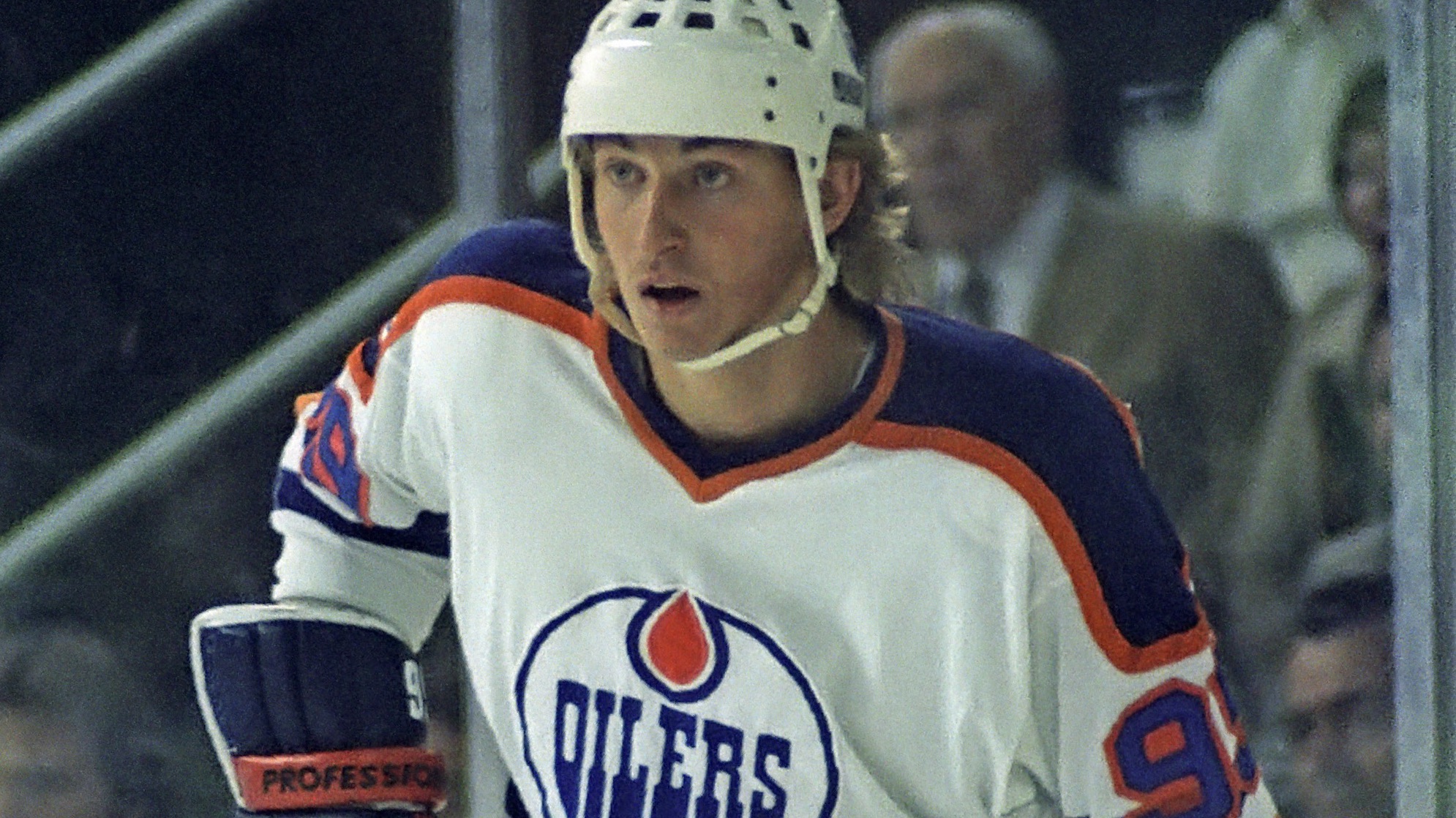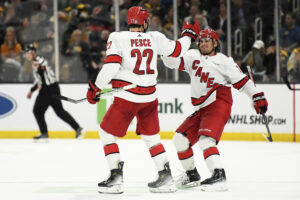The NHL Draft is just under a few weeks away. The draft always provides plenty of drama and intrigue amongst fans and media. This has been true since its inception. While people tend to get excited about trades and prospects, there are other moments that leave people scratching their heads. For this edition, we head back to 1979 (again) when a former WHA team drafted the foundations of a dynasty… and got some help along the way. Let’s take a look at the Edmonton Oilers Draft and Dynasty.
Edmonton Oilers Draft a Dynasty
The Merger
For seven years, there were competing hockey leagues in North America. The NHL and the WHA. The relationship between the two leagues could be described as, putting it mildly, strained. Between rising salaries, talent raids and market battles, there was no love lost between the two leagues. By 1979, however, the WHA was failing. So the two leagues (for not the first time) entered into merger talks. By June 1979, the merger was complete.
Calling it a merger is rather generous. It was more of a hostile takeover. The NHL does not recognize any records or statistics from the WHA. Also, in the ‘merger’ the NHL only agreed to bring over four teams, the Hartford Whalers, Quebec Nordiques, Winnipeg Jets and Edmonton Oilers. The three other teams, Indianapolis Racers, Birmingham Bulls and Cincinnati Stingers were all folded. The merging teams were not considered to be merging into the NHL rather they were four new expansion teams that were in the same cities and had the same team names as the WHA versions. Because of this, the NHL has to now have several other drafts to re-distribute players from the WHA.
So Many Drafts
The NHL came up with three separate drafts to redistribute the WHA players amongst the teams. They would also update the Entry Draft rules as well. For the Entry Draft, the league lowered the minimum age to 19 from 20. Joining the junior prospects would be any underage players that were signed to WHA teams. The league also made the four new teams draft at the end of the first round rather than at the top as with previous expansion teams.
There would be a WHA-only dispersal draft where the existing WHA teams would pick any players over 20. Then the NHL had a reclaim draft where NHL teams could reclaim players from the four incoming teams they had drafted but opted to play in the WHA. The four teams could protect up to two goalies and two skaters as priority selections. Once the WHA player had been dispersed, there would be an Expansion Draft.
Once all the WHA players were dispersed and the four new teams had their Expansion Draft it was on to the Entry Draft.
1979 NHL Draft
There was one serious question around the draft, however. Would Wayne Gretzky be available in the Entry Draft? He was underage and played with the Oilers in the 1979 season. The rules stipulated he should be available. The catch was that Gretzky was not signed to a standard contract, but rather a personal services contract with Oilers owner Peter Pocklington. After much deliberation, it was deemed that the Oilers could use one of their priority selections (from the reclaim draft) to protect Gretzky. The Oilers did just that. And just like that, the most significant piece of their soon-to-be dynasty was in place. The league also made Edmonton pick last in the first round as part of the agreement but that was a small price to pay.
The first round saw five WHA underage players selected, including first overall. The 1979 draft was uniquely deep as there was an influx of prospects due to the lowering of the age and the WHA merger. Teams drafted seven Hall of Fame players. The draft was so deep that Hall of Famer Dino Ciccarelli went undrafted.
The Edmonton Oilers draft (not counting Gretzky) consisted of three of those Hall of Fame players. That’s how you lay the foundation of a dynasty. In the first round, they selected defenceman Kevin Lowe. In the third round, they picked Mark Messier and in the fourth round, they selected Glenn Anderson. To top things off they signed defenceman Charlie Huddy as an undrafted free agent.
What a Draft
The Oilers really hit a grand slam with this draft. Firstly, being able to keep Wayne Gretzky was a master stroke and a bit lucky. Still, we all know the career the “Great One” had. He holds 61 NHL records including most career goals, assists and points in the regular season and playoffs. He twice eclipsed the 200-point plateau in the regular season. Of his many accomplishments, he won the Hart Trophy as league MVP nine times, the Art Ross 10 times, four Stanley Cups and two Conn Smyths. His number 99 has been retired league-wide and was eminently inducted into the Hall of Fame after retiring in 1999.
On this day in 1979: #NHLAlumni Wayne Gretzky scored his first @NHL goal for the @EdmontonOilers. Gretzky’s goal against the @Canucks brought the game to a 4-4 tie and was just the beginning of his legendary career.#OTD pic.twitter.com/LNOjXHZtyO
— NHL Alumni (@NHLAlumni) October 14, 2020
The Picks
Beyond Gretzky, the actual draft was otherworldly. Kevin Lowe’s numbers won’t impress anyone but he was an excellent defensive defenceman, something the high-flying Oilers would need. A solid defender who would let the skill guys go do their thing while keeping the other team’s offence at bay. Lowe would win six Stanley Cups (five with the Oilers) in his career. While he doesn’t hold any Gretzky-type records, Lowe was such a good defender he was inducted into the Hall of Fame in 2020.
Mark Messier is considered the greatest leader in hockey history. He wasn’t just big speeches and guarantees either. Messier’s 1,887 points are third all-time and his 694 goals are ninth. He won two Hart Trophies, six Stanley Cups (five with Edmonton) and a Conn Smythe. If Gretzky was the Oilers Superman, Messier was their Batman. Messier was inducted into the Hockey Hall of Fame in 2007.
Glenn Anderson is known as one of the best clutch players in NHL history. He ranks third all-time for playoff overtime goals (five) and fifth in playoff game-winning goals (15). His 98 playoff goals rank fourth all-time as do his 214 playoff points. In his career, Anderson would score 498 goals and 1,099 points. He was inducted into the Hall of Fame in 2008.
Charlie Huddy was not a Hall of Fame player but he was an integral part of the Oilers dynasty. Like Lowe, Huddy provided steady defence but he was also able to produce more offensively. he played for the Oilers for 10 seasons winning five Stanley Cups.
Championship Pedigree
Embed from Getty Images
These four players were significant pieces to the Oilers dynasty of the 80s. The team won four Cups in five years between 1984 to 1988. Even after Gretzky was traded after the 1988 season, the core led by Messier was able to win again in 1990. After starting to tear down their dynasty in the late 80s, it was completely torn down by 1992. Gretzky, Huddy, Messier, Anderson and Lowe had all been moved by the Oilers. As fate would have it, however, Lowe, Messier and Anderson all found themselves together again on the 1994 New York Rangers Stanley Cup winning team.
1979 NHL Draft Legacy
The 1979 NHL draft is one we are likely never to see again. With the merger and lowering of the minimum age, the level of talent that was available was second to none. Along with the Oilers Hall of Famer players, Mike Gartner, Ray Bourque, Guy Carbonneau, and Michel Goulet were picked in this draft (Along with the undrafted Ciccarelli). Other notable names picked include Rick Vaive, Brian Propp, Mats Naslund, Pelle Lindbergh, Dale Hunter, Mike Ramsey and Rob Ramage, not to mention the undrafted Tim Kerr. While this was the end of the tumultuous 70s for the NHL the high-flying 80s were just about to get started and after the 1979 draft, the Oilers were about to take the league by storm.






